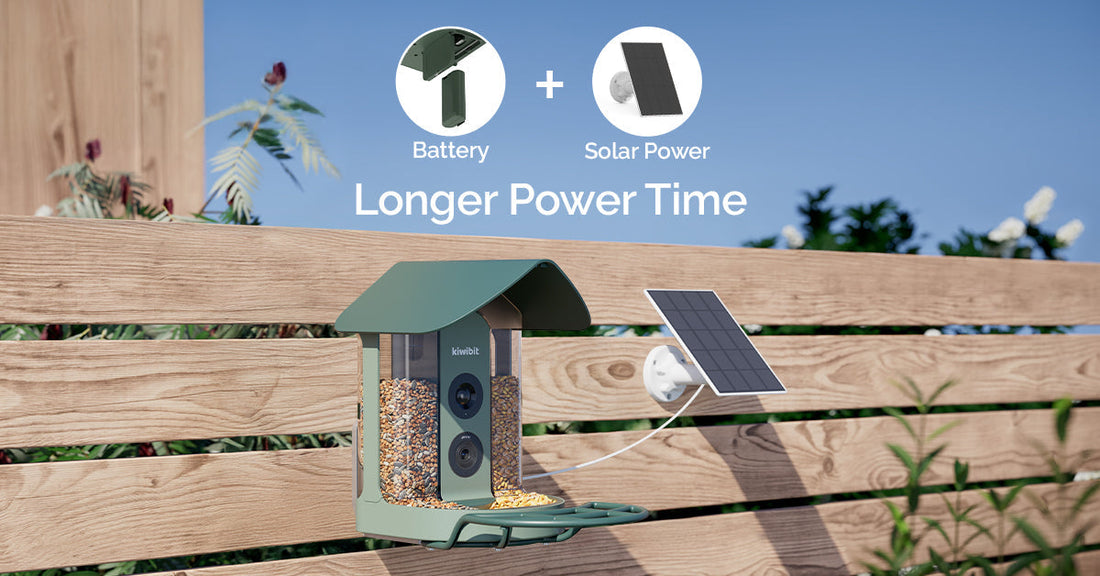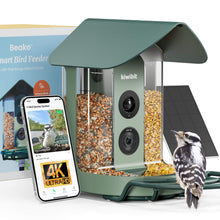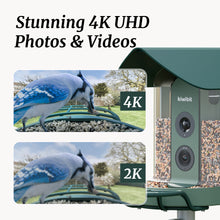Why Do Smart Bird Feeders Use Solar Panels Now?

When we launched Beako™, three questions kept popping up in the comments:
“Why do I need a solar panel?”
“If there is a battery, why add solar?”
“What does the solar panel actually do day to day?”
Short answer: the panel does not replace the battery. It supports the battery so your feeder stays online longer with less babysitting. Below is how that plays out in real yards and what to do to get the most from it.
Key Takeaway
Solar extends runtime, cuts manual charging, and treats your battery more gently. In practice, it helps in three ways:
-
Fewer manual charges even if you stream, review clips, or run AI recognition often.
-
Extra headroom on gray days and in short daylight seasons, so you avoid constant “low power” mode.
-
Shallower discharge cycles through trickle charging, which is kinder to battery health over time.
Why is the battery alone not always enough
Real power draw changes with how you use the feeder
Recording triggers, frequent replays, high detection sensitivity, nighttime IR, and cold weather all add load. Holiday weeks and migration peaks can double your daily events.
Two hidden costs of a battery-only setup
- Your time for top-ups, especially in winter or rainy spells.
- Battery wear from repeated deep discharges before each full recharge.
What the solar panel actually does
Daytime replenishing
It turns scattered daylight windows into usable energy. Even diffuse light nudges the charge level upward and keeps the “battery floor” higher through the day.
Trickle charging
Low, steady input helps avoid deep dips. Over months, shallower cycles are easier on the pack than “run to empty, then full.”
Gray-day buffer
In fall and winter the sun is lower and days are shorter. A well-placed, higher-output panel collects more in short windows, which means fewer compromises on features.
Reality check Battery only: expect top-ups after several busy days, depending on weather and settings. Battery + solar: longer intervals between charges and fewer reductions in features. Results vary with temperature, light, motion activity, and clip length.
Why some models put the panel in the “roof”
An integrated solar roof solves three practical issues:
- Short, sealed power path that is simpler and more weather resistant.
- Consistent facing, so users do not accidentally park an external panel in partial shade.
-
Easier cleaning since you wipe the roof in one pass.
If you used a previous generation with a user-installed 3 W external panel, you will notice the new integrated roof with higher total output is more forgiving in partial shade and during cloudy stretches.
Which setup fits your yard
Plenty of sun, light usage
An entry solar option or an external 3 W panel is fine if you rarely stream and your site gets strong midday sun.
Mixed sun, frequent clips and replays
Choose an integrated, higher-output solar roof. You will spend less time charging and less time turning features off.
Cloudy, high latitude, or short days in winter
More watts help. Pair a higher-output roof with sensible settings for nights and storms.
Placement and care that make the biggest difference
Light and shade
- Face the panel toward your best local sun.
- Avoid long, fixed shadows from eaves and branches.
- Wipe pollen, dust, and leaves regularly.
Heat and airflow
- Give the back of the panel a gap so heat can escape.
- Do not sandwich the unit against hot walls or metal surfaces.
Cable routing and squirrel management
- Use a metal-coil wrapped cable where available to resist chewing and abrasion.
- Mount on a smooth pole with a cone or disk baffle at about 4.5 to 5 feet.
- Keep 8 to 10 feet horizontal distance from rails, trunks, and eaves.
Two common misconceptions
“Bigger wattage solves everything.” Wattage helps, but placement and cleanliness matter just as much. A well-placed mid-size panel in full sun outperforms a larger panel parked in partial shade.
“Solar means I can set it and forget it.” Heavy rain, leaf fall, and snow reduce input. Add “wipe the roof and check the cable” to your weekly routine and stability improves a lot.
Smart starter settings
- Begin with medium motion sensitivity, then adjust to traffic.
- Use 10–15 second daytime clips and slightly shorter at night.
- Schedule notifications and high-load features for peak hours rather than all night.
- Before big migration nights or holidays, clean, top up, and free storage.
FAQ
Do I still need a battery if I have solar
Yes. The battery runs the system. Solar reduces how often you need to recharge and how deeply you discharge.
Does solar work on cloudy days
Yes. Diffuse light still contributes. The better the placement and the higher the output, the more you notice the gain.
Integrated roof or external panel
Integrated is simpler if you do not want to site and wire a separate panel. External works well if you have a perfect sun wall or pole and you like DIY mounting.
Is a metal-coil cable truly squirrel-proof
Nothing outdoors is absolute. The wrap resists chewing and scuffs, but spacing and a proper baffle are what really move the needle.
Will cold weather stop charging
Severe cold reduces charge efficiency. Keep surfaces clean, maintain airflow behind the panel, and tune night settings to leave margin.



